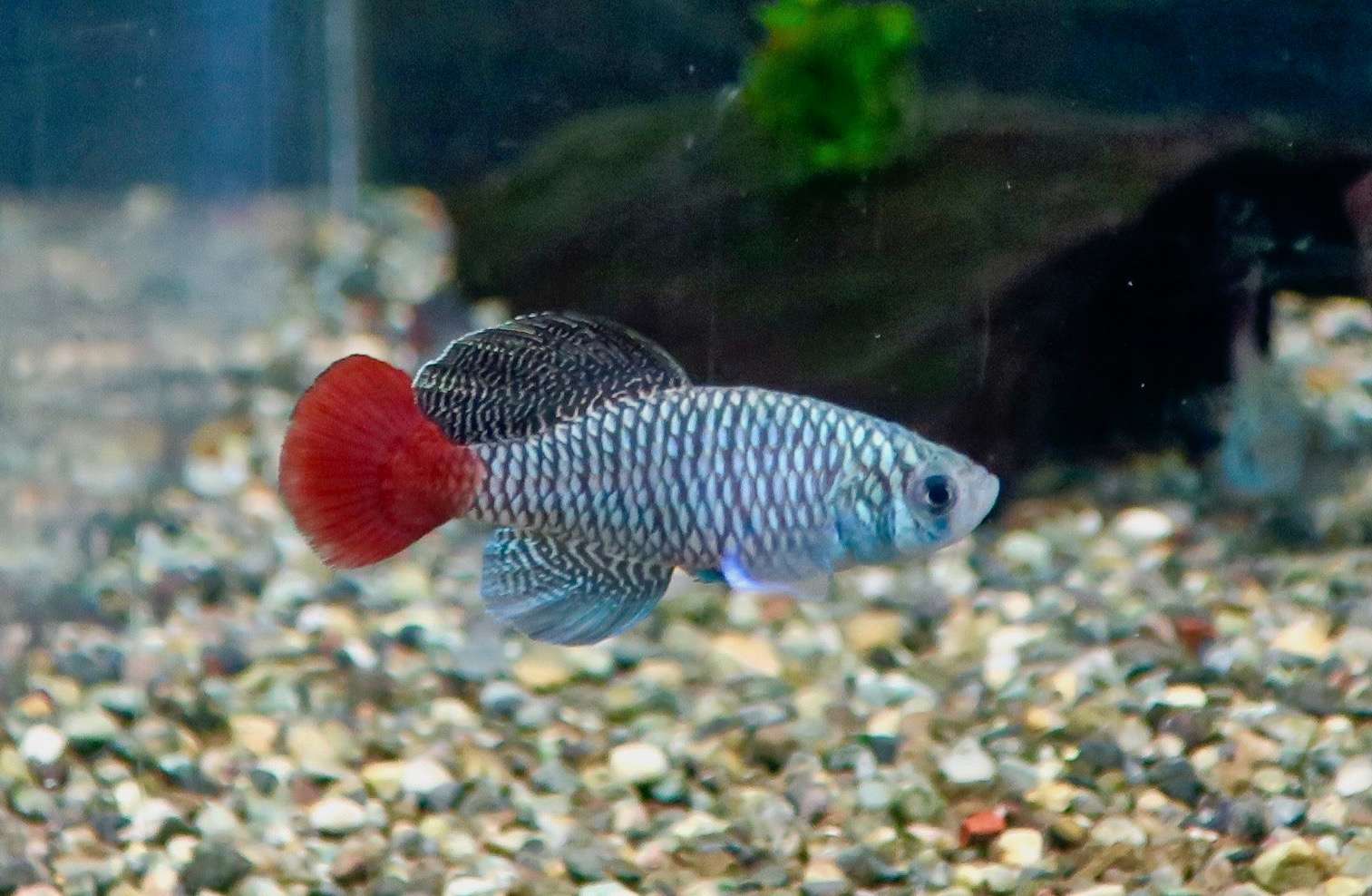How to care Blue Notho
The Blue Notho, or Nothobranchius guentheri, is a strikingly beautiful species from East Africa, often found in the temporary freshwater pools, swamps, and streams that litter the region's floodplains. This species is particularly known for the vivid, electric-blue coloration of its males, which makes it one of the most sought-after fish for aquarium enthusiasts who specialize in African species. The males exhibit deep blue hues on their bodies, with hints of iridescent green, while the females are more subdued, appearing in shades of yellow and brown.
Like many species in the Nothobranchius genus, Blue Nothos have a fascinating and unique reproductive cycle. In their natural habitats, these fish are subject to the seasonal drying and flooding of their water sources. They have evolved to lay their eggs in the soft, silty substrate of these pools, where the eggs can survive the dry season and hatch once the rains return and water levels rise again. This adaptation to a short lifespan in the wild is reflected in their relatively brief time in aquariums, typically living for about a year or two.
In an aquarium setting, Blue Nothos require a carnivorous diet rich in protein, including live or frozen foods like brine shrimp, daphnia, and bloodworms. Although they can be fed with some flake or pellet food, their growth and health will be best supported by regular servings of live or frozen foods. To ensure they stay healthy and vibrant, water temperature should be maintained between 75-85°F (24-29°C), and frequent water changes are necessary to avoid the build-up of harmful substances, such as ammonia and nitrites. Their tank should be spacious enough for swimming and include plenty of hiding spots, as males can sometimes become territorial.
Blue Nothos are generally peaceful but can display aggressive behavior toward each other, particularly males, when in confined spaces. To minimize stress and aggression, it's important to maintain a proper stocking ratio, typically 1 male to 2-3 females, with plenty of plants or other decorations to provide hiding places. A densely planted tank with fine-leaved plants will not only mimic their natural habitat but also help maintain water quality.
Though they are moderately difficult to care for, the Blue Notho is a rewarding species for aquarists with experience in keeping short-lived, seasonal fish. Their vibrant colors, intriguing behavior, and fascinating reproductive cycles make them a fantastic addition to a specialized aquarium dedicated to these unique fish. However, due to their short lifespan and specific care needs, they are not recommended for beginners. With proper care, they can live a healthy and vibrant life in a suitable environment.
Blue Notho is a fascinating aquarium fish that stands out with its vibrant colors. It belongs to the family Nothobranchiidae and is native to the East Africa.
This species has a care level of Moderate and requires a minimum tank size of 20 gallons (75 liters). It typically reaches a size of 2.5 inches (6.5 cm).
Preferred water parameters include a specific gravity (sg) of 1.000 - 1.005, pH ranging from 6.5 - 7.5, and a temperature between 75-85°F (24-29°C). Additionally, maintaining water hardness within the range of 8-12 dGH is essential.
For stocking, the recommended ratio is 1:2-3 M:F. The Blue Notho is widely available and has a diverse diet that includes Carnivorous, brine shrimp.
With a life span of 1-2 years, this species is known for its very easy care requirements. It is an ideal choice for both beginner and experienced aquarists. Providing a well-maintained tank environment with suitable water conditions will ensure the health and vibrancy of this captivating species.

